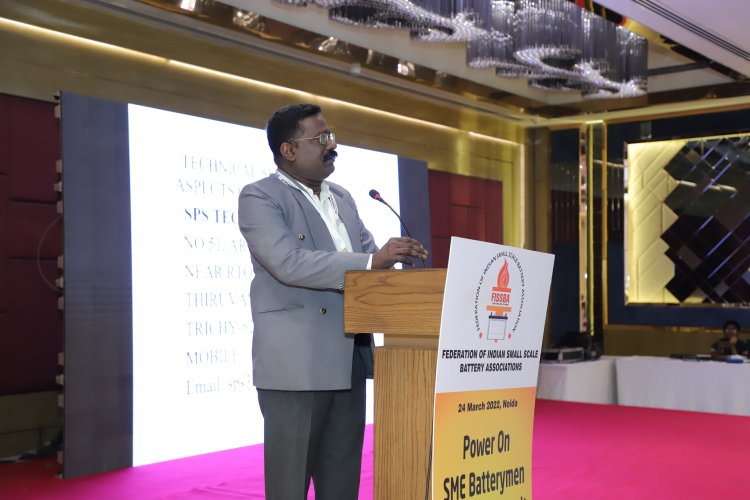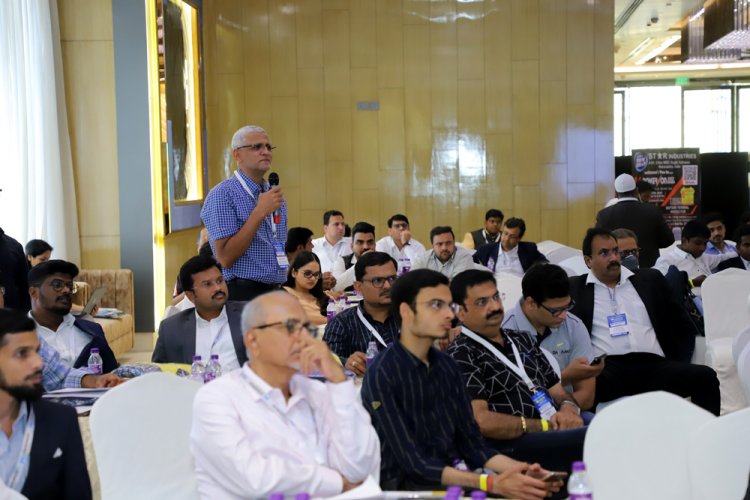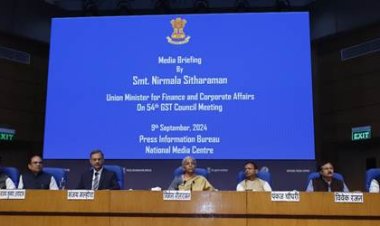DESIGN ASPECTS OF AGM VRLA BATTERIES
SPS technologist is the leader in providing technology for packaged power in India. They are supporting for a wide range of advanced technology of lead acid batteries for almost all kinds of applications such as Railways, Standby, Solar, and Motive power etc. The company is situated in Trichy. The world-class manufacturing methods are being used to support our customers to make batteries.

Presentation by S. Palaniswami during 17th Power On Battery Technology Conference
The lead acid battery
- The lead acid battery is made of a positive plate, negative plate, and sulphuric acid
- Positive plate: PbO2
- Negative plate: Pb
Sulphuric acid: H2SO4
Electrochemical reactions
Basic electrochemical reactions taking place within the battery can be described by double sulfate reactions as
- PbO2+Pb+H2SO4 <---> PbSO4+PbSO4+2H2O
Basic designe features
- Special corrosion resistance alloy has been used for both positive and negative plate
- Pasted positive plate with high porosity and more surface area to have the very good initial capacity and life.
- Ultra strong container and lid both abs and PPCP
- AGM separators
- Good quality oxide and paste ingredients
- Stringent checks at every stage of operations to have optimum performance and life
- Improved design of venting systems

Basic constructions
- AGM SMF VRLA cells/batteries consist of pasted positive plates and pasted negative plate, absorbent glass matt separators, injection/compression molded container and lid and safety valve with venting systems
Container
- The containers are made of good raw materials properties of melt flow, heat deflection, and density as per ASTM standards.
- Highly reinforced design withstands impacts during transportation and during handling of the battery.
- Ribbed constructions give extra strength and durability.
Positive plate
- The pasted positive plate with good alloy composition in the grid and with proper aging before pasting,
- The pasting and curing are processed at very controlled conditions to have better performance.
- Our unique paste composition enhances high-rate performances and cyclic life
Negative plate
- Negative plates are of interlocking grids frame constructions and made of special alloy
- The grids hold maximum active material to match the positive plate
- It is accurately balanced to the pasted positive plate for optimum life and capacity.
- Special expanders have been used to counter the contraction and drastic reduction of gassing during the life of the battery
Battery Separators
- Separators are of AGM and have good insulating properties.
- It has high porosity for maximum conductivity
- It has a low electrical resistance
- It is highly inert to sulphuric acid and is extremely durable.
- It ensures good service life and long shelf life.
Safety valve
- It should be made from fluoro rubber preferably from EPDM and must have
- Very good tensile strength, good heat resistance,
- The good acid resistance characteristics.
- The good silicone oil resistance
- Consistency in opening and closing pressure.
Flame arresters
- It is being used along with a safety valve for higher-capacity batteries.
- It condenses most of the acid and water back into the cell
- Each cell is provided with one flame arrester along with a safety valve to achieve gas recombination efficiency and eliminate the topping up of di water in the cell/battery during the life of the battery.
Curing of positive and negative plates
- Curing is to be done in a controlled atmosphere.
- As per the curing schedule humidity and temperature must be set, readings should be taken with definite intervals and recorded
- Free lead must be checked before the plates are going for drying and the free lead must be less than 2%.
- The drying is also to be done at a controlled temperature preferably from 50 to 60 ċ
- After drying is completed, please check it for moisture and it should be less than 1%,
- Store all the plates in dust-free conditions till the assembly of plates.
Acid preparation
- Water and acid should conform to is 266 & 1069 respectively
- Always add acid to water, never add water to acid
- Stir the liquid well with a lead-lined wooden rod during mixing.
- Allow the acid to cool down to room temperature before filling
- While handling acid wear protective clothing such as a rubber apron, goggles, rubber gloves and gumboot.
- To prepare 1.200 acid, mix 4.4 parts of water with 1 part of 1.835 acid by volume
- Or
- Mix 1.1 parts of water with 1 part of 1.400 acid by volume
Acid filling
- The specific gravity of the acid is to be ensured as per the specification with respect to the type of batteries and applications
- Please make sure that the acid temperature is maintained at 30 digree centigrade or below before filling into the cells
- Fill the acid as per the specified volume/cell
- Allow the cells to cool down for 06 to 12 hours
- If need be please ensure the forced air cooling arrangements.
Jar formation
- We recommend for cured plate assembly and charging instead of plate formation to overcome handling, damages, and environmental issues,
- Connect the batteries for charging at a specified rate for the specified duration and as per the schedule
- The charging step is formulated with 10 to 12 steps including charge, discharge, rest, and finally capacity test and recharge before the batteries are shifted to final assembly, approximately around 100 hours,
- Forced air cooling must be placed in the charging area to avoid the temperature rise in the batteries,
- The batteries which are passing the capacity requirement in the final step should go to the next stage of operation. The temperature of the battery should be below 50‘ c during
- If the temperature is above 45‘c, reduce the rate of charge, and should it be above 50‘c discontinue the charging for some suitable period and proportionately increase the time
Final assembly of AGM VRLA batteries
- The batteries which have passed all the quality norms in charging should go for final assembly,
- All the batteries must be cleaned properly.
- The vent valve is to be fixed and the top plate is to be sealed with ultrasonic welding.
- Subject all the batteries for ocv, hrd and ir, if passing the requirements, allow the batteries for packing for onward despatch to the customer.
Normal and equalizing charge
- Normal charge is used to recharge the battery after a discharge at the c10 rate.
- An equalizing charge is a continuation of the normal charge at a low rate to bring all the cells in a healthy and equalized condition.
- It is preferable if the equalizing charge is given once in three months.
Trickle charging
- It is a very low rate of charging of cells when they are kept out of service.
- And it is to compensate for the small internal loss of capacity when kept idle.
- The voltage of cells at trickle charge will be 2.25 – 2.30v/cell
Charging in the UPS
- Normally constant potential charging is used in the ups for charging the batteries.
- The voltage of the ups is to be set that is maintained in a fully charged level always.
- If the setting voltage is low, the charging will go down, undercharging the cells
- If the setting is high, then the charging will go up and gas much, leading to drying out
E-bike batteries
- Basically, it must suit the cyclic application
- Special negative formula to avoid sulphate formation in the negative plate,
- Alloy quality to be improved to reduce corrosion in the positive plate,
- Good green plate formation methodology to have a good life,
- Selecting the right filling gravity for filling and the final gravity for fitment,
- Selection of proper separator grammage and other quality parameters
Maintenance of battery in the systems
do's
- Check the setting voltage at regular intervals.
- Choose the pilot cell and rotate them every month for taking readings.
- Use the readings on pilot cells as general indications for the set of batteries in a systems
- Always keep the batteries clean and dry.
- Remove the inter-unit and end cell connectors, clean them and apply petroleum jelly.
- If the batteries are to remain idle, give equalizing charge till they are fully charged and then store.
- Give equalizing charge every month and before refitment to the systems
- Use only the same make of batteries in one system
- When it is not possible to give the equalizing charge then the batteries can be put on trickle charge at a voltage of 2.25 to 2.30v /cell0
Dont`s
- Naked flame and smoking should not be done while working on cells.
- Care is to be taken not to bridge the terminals.
- Never use different make cells/batteries in one system
- Batteries of different health and service should not be mixed up in a systems
- Do not leave the battery in a discharged condition
- Do not expose the batteries directly to sunlight and rain
- Do not throw the cells/batteries on the ground use ladder or poles
- Do not keep the batteries in close proximity to heat-generating sources
- Do not keep the charged batteries for more than 3 months without giving the freshening charge.
- Do not press and/or bend the terminals.
- No attempts are to be made to reverse charge the cell/batteries
Author of this Presentation |
|---|
|
S.PALANISAMY PEROEESIONAL EXPERIENCE: 30 Years Professional experience in Lead Acid Battery Industry. AREA OF ACTIVITIES:
|



























